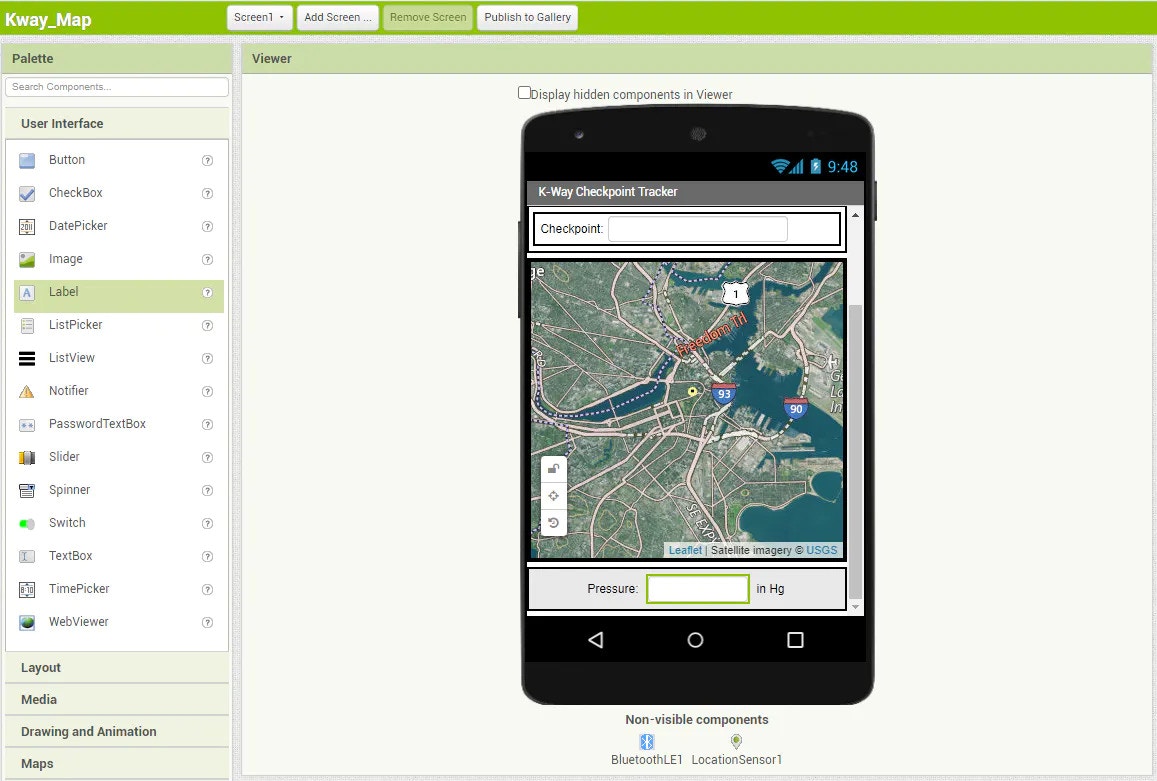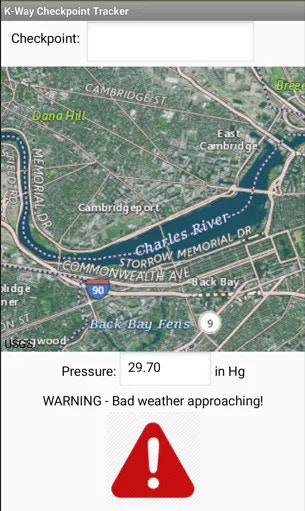Project Demo
Story
With microcontrollers getting smaller, more powerful, and more energy efficient, Artificial Intelligence (AI) is finding itself deployed more and more at the edge: on sensors, cameras, and even clothing! For this project, K-way, a maker of jackets, clothing and accessories, teamed up with Arduino to see how K-way’s products could be made smarter. I was fortunate enough to be sent a K-way jacket with an Arduino Nicla Sense ME, a custom case and battery, and a lanyard.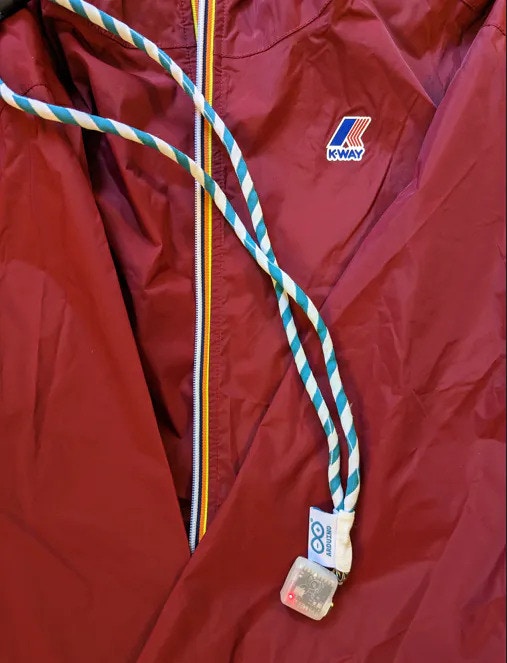

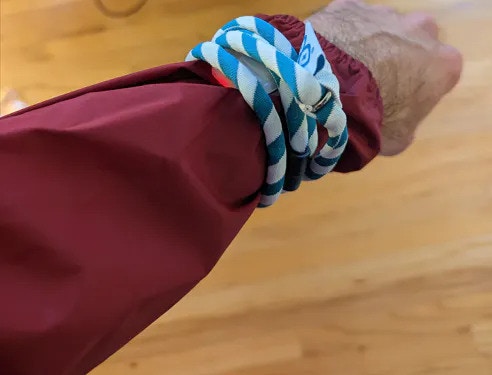
nicla_sense_ingestion.ino sketch was used to collect the raw accelerometer data. I created 3 classes: idle (no movement), walking, and checkpoint. The Checkpoint class was essentially me drawing the letter “C” in the air to tell the app to mark a checkpoint on the map while out on a hike.
You of course could add additional gestures if you wanted to expand the functionality of the jacket and Nicla Sense ME (an “S” for “selfie” maybe?). Even with just 15 minutes of data (split between Training and Test), there was great clustering of class data:
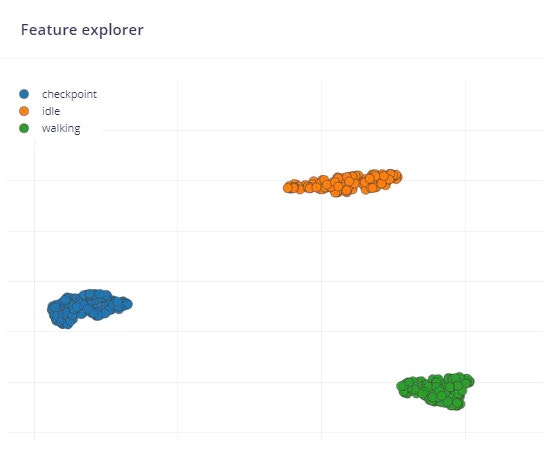
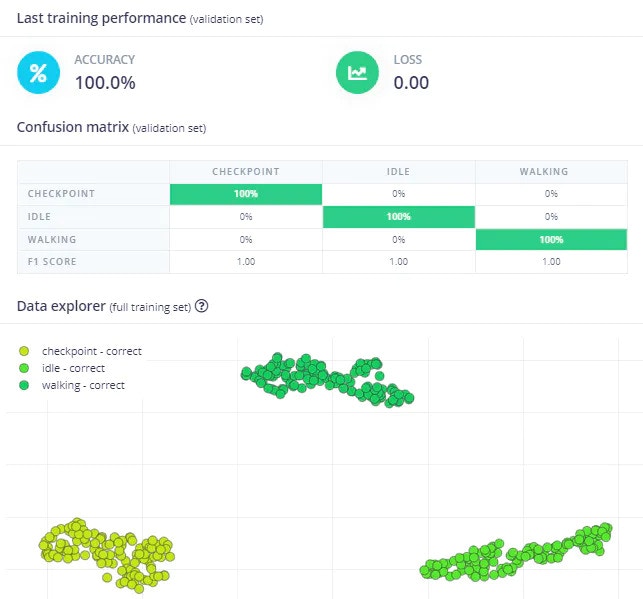
nicla_sensor_fusion.ino sketch from the library to start my project. Given that the inference code was already in there, I only had to add in the BLE code and some logic to send data over BLE to the app. Edge Impulse really does make it simple.
Once I had my code in place, I went over to MIT App Inventor to create the interface to the Nicla Sense ME BLE data.
